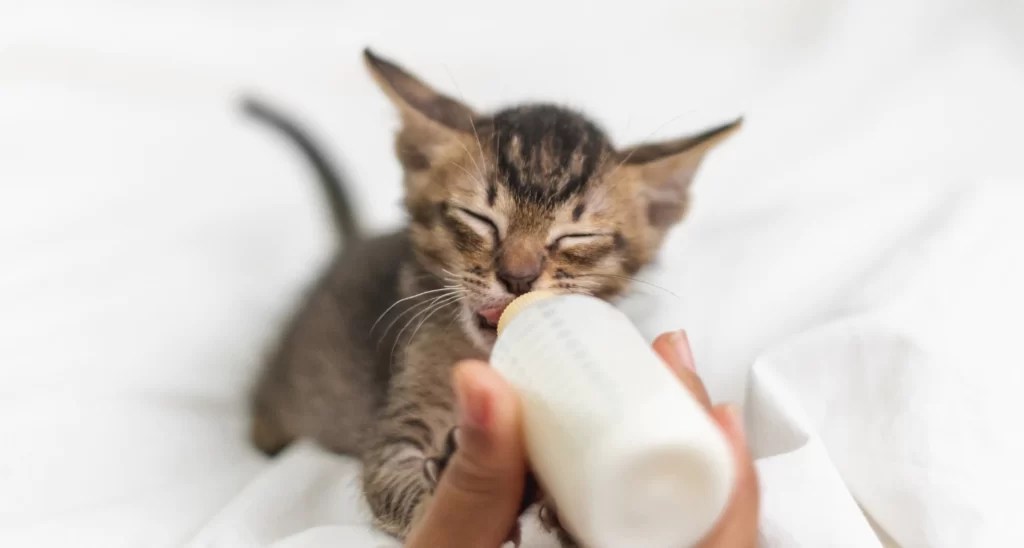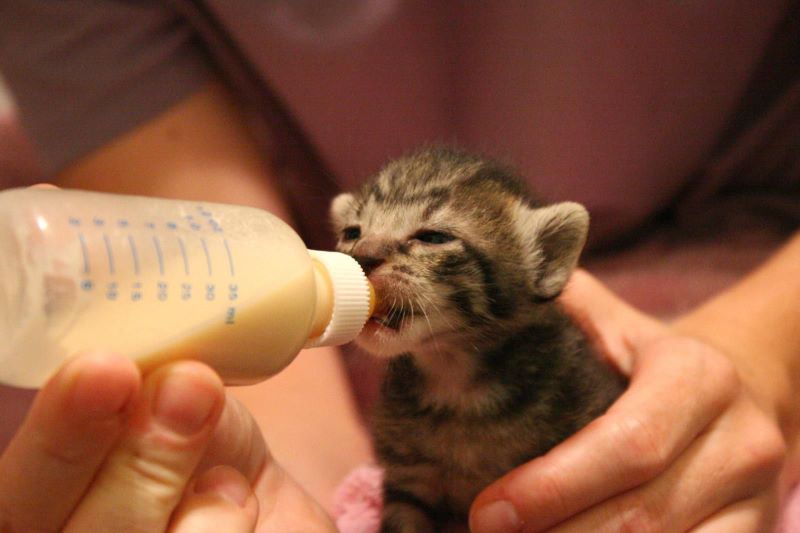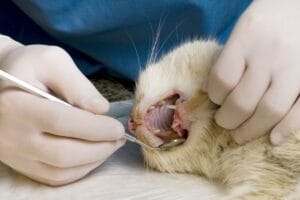How to Feed Newborn Kittens without the Mother Cat

Feeding newborn kittens specially without their mother cat can be quite challenging, but with the right approach and preparation, you can ensure that they receive the nutrients and care they need to grow and thrive. We will discuss practical tips and guidelines on how to feed newborn kittens without their mother cat.
Reasons why the Mother might not be Feeding her Kittens
There are several reasons why the mother cat might not be feeding her kittens. Here are some of the most common ones.
- The mother cat has rejected them: In some cases, the mother cat may abandon her litter or reject one or more of her kittens.
- The mother cat is unable to produce milk: Sometimes, a mother cat may be unable to produce enough milk or may suffer from a medical condition that prevents her from nursing her kittens. For example, Cat Mastitis can cause the nipples to swell and bleed, preventing the mother from nursing.
- The mother cat has passed away: Unfortunately, in some cases, the mother cat may pass away, leaving her kittens without a source of milk and care.
Regardless of the reason, it’s important to act quickly to ensure that the kittens receive the care they need. Let’s begin discussing how we can do that.

Step 1: Determine the Age of the Kitten
Determining the age of a kitten is important as it helps in knowing the type of care the kitten requires. Here are some ways to determine the age of a kitten:
- Look at the kitten’s eyes: Newborn kittens have their eyes closed and will open them between 7-10 days of age. If the kitten’s eyes are open, you can estimate that it is at least one week old.
- Observe the kitten’s teeth: The presence or absence of teeth can also help in determining the age of the kitten. At around 3 weeks old, the kitten’s front teeth, known as the incisors, will start to emerge. By 4 weeks old, the kitten will have all its baby teeth.
- Check the kitten’s ears: A kitten’s ears will begin to stand up between 10-14 days old. If the kitten’s ears are standing up, it is likely to be at least two weeks old.
- Examine the kitten’s coat: Newborn kittens have a very fine and short coat. As they grow, their coat will become thicker and longer. At around 4 weeks old, the kitten’s coat will have a fluffy appearance.
- Assess the kitten’s mobility: Newborn kittens are not able to walk until they are around 3 weeks old. At around 4 weeks old, the kitten will be able to walk with a wobbly gait.
- Look at the kitten’s weight: Kittens gain weight rapidly during their first few weeks of life. By 8 weeks old, the kitten should weigh around 2 pounds.
In this article, we will be focusing more on “Newborn Kittens” and Kittens less than 6 weeks old. For kittens older than that, you can find commercially available solid “kitten food”. This kitten food has been specially created to have the right amount of nutrients that your little friend will need. Kittens at this age will also have their senses fully developed, so all you have to do is give them the food.
Step 2: What do Newborn Kittens Eat?
Before we dive into how to feed newborn kittens, let’s first understand what they eat. Newborn kittens require a special diet that is rich in protein, fat, and other essential nutrients that help them grow and develop.
They do drink milk from their mothers. This might prompt you to try giving them cow or goat milk. However, this is not a good idea. The composition of the milk is different from cat milk, and will cause your kittens to upset their stomachs.
Instead, you should use specially produced milk formula for your kitten, which contains exactly what it needs to grow up strong and healthy. There are different types of milk replacement formulas available on the market, and it is important to choose the right one for your kittens. Look for a formula specifically designed for kittens, as these contain the right balance of nutrients that they need.

Step 3: How to Feed Newborn Kittens without the Mother Cat
Now we know the age of our kitten and what it is supposed to eat. Lets begin exploring a 7-step process on how to feed newborn kittens, without the mother cat.
- Choose the Right Milk Replacement Formula
As mentioned earlier, it is important to choose the right milk replacement formula for your kittens. Look for one that is specifically designed for kittens, as this will contain the right balance of nutrients they need. Be sure to follow the instructions on the packaging carefully.
- Warm the Formula
Kittens prefer their milk warm, so be sure to warm the formula to around 100°F before feeding them. You can warm the formula by placing the bottle in a bowl of warm water. Also, remember to test it on your finger before giving it to them. If it feels hot to you, then its probably too hot for them (they are much smaller after all).
- Feed the Kittens
To feed the kittens, either hold them gently yourself, or place them lying belly-down on the ground. Do not feed them on their back. Next, grab a bottle with a nipple designed for kittens, and place the formula inside it. We can now begin feeding them. The kittens instincts to suckle should kick in once you press the nipple to their lips.
Make sure the nipple is facing upwards to avoid air getting into the kitten’s stomach. Let the kitten suckle at their own pace, and stop when they are full. Remember, a healthy newborn kitten is supposed to be quite plump. If they aren’t, then you aren’t feeding them enough.
- Establish a Feeding Routine
Consistency is key when it comes to feeding newborn kittens. As a general rule, newborn kittens should be fed less than a tablespoon of milk replacement every 2 to 3 hours. As the kittens grow older, they will require less frequent feedings, and their portion sizes will increase. Therefore, it’s essential to adjust their feeding schedule accordingly.
- Burp the Kittens
After feeding, hold the kitten upright and gently pat their back to burp them. This helps remove any air that may have been swallowed during feeding.
- Keep the Kittens Clean
After feeding, clean the kittens with a warm, damp cloth to ensure they stay clean and healthy. Be careful, as newborn kittens are very delicate and require careful handling.
- Introduce Solid Food
Once the kittens are around four weeks old, you can start introducing wet food into their diet. Offer a small amount of wet food on a plate, and let the kittens explore and eat at their own pace. Be sure to continue feeding them milk replacement formula as well until they are about 8 weeks old.
There many other things to keep in mind when taking care of newborn kittens. Cleaning them, Grooming them, keeping them safe, etc. It’s quite the hurdle, but the payoff is worth it.


